If a few years ago the fashionable sport was running and popular races invaded the cities every weekend, now the fever for cycling has caused cycling events to proliferate throughout Spain.
There are dozens of them, both on the road and in the mountains ('mountain bike' or MTB), which bring together thousands of amateur and professional cyclists, such as the Klasika Bilbao Bizkaia, Pedals de Foc Non Stop and Los Diez Mil del Soplao in Cantabria, The stone giant in Castellón, the Quebrantahuesos in Huesca, the 101 kilometers of Ronda in Malaga or the Madrid-Segovia.
The Orbea Monegros, one of the most popular events on the national calendar, serves as an example for designing a training and diet plan with which any cycling fan without much experience in competition can safely face a demanding and fun race at the same time. .
One advantage of the Orbea Monegros, which is held in the town of Sariñena in Huesca (about 75 kilometers from Zaragoza), is that it does not have too much accumulated unevenness and allows you to compete in two distances depending on the physical condition of each participant.
The main test of the Orbea Monegros, called the marathon, has a distance of 117.7 kilometers with an accumulated positive difference in altitude of 1,149 meters and an average duration of six and a half hours. The less experienced can opt for the half marathon, which consists of a 81.7 kilometer route with 815 meters of cumulative elevation gain and an average duration of five hours.
Another advantage of the Orbea Monegros is that you can participate with all kinds of bicycles, including electric (e-bike) and gravel (a type of hybrid road and mountain bike). In addition, to participate in the race it is not mandatory to be in possession of any type of sports-federation license. The organization takes out accident insurance that is included in the registration price (58 euros for both distances).
Although there are only two weeks left for the 21st edition of the Orbea Monegros to take place in the Aragonese desert (on Saturday, April 29), and most of the participants should have already completed the preparation phase, this training plan can serve to verify if you have done a good physical job.
The first thing to take into account before embarking on a race like the Orbea Monegros is that your physical condition is healthy and you do not have any symptoms of injury or pain that prevent you from riding a bike. It is advisable to carry out a stress test before starting physical preparation so that your heart rate bands are indicated to regulate, plan and program the intensities of the training loads.
If you do not have previous experience in races of this type, but you ride a bike relatively frequently, it is enough to dedicate seven or eight weeks specifically to the preparation program.
It is advisable to train four or five times a week, being able to alternate outdoor training with indoor cycling sessions ('indoor', in English), either at home with a roller, 'spinning' or virtual cycle classes in the gym.
At least two sessions a week should be on a mountain track with the mountain bike to familiarize yourself with the sensations that you will have on race day. If there is any training that cannot be done, you can use the rest day to complete it. It is also advisable to carry out sessions with overweights in the gym to develop muscle strength. These sessions will be included from the fourth week of training.
In the first three weeks it is about acquiring the habit of training and including it in the daily routine of everyday life. It is advisable to dedicate two sessions a week, lasting between 90 and 120 minutes, to develop aerobic capacity with an intensity between 70% and 75% of our theoretical maximum heart rate (HRMT). Two other sessions should be outdoors on the mountain bike. And one session a week, generally on Monday, will be regenerative with an intensity of 65% of the FCMT.
The next three weeks the four or five workouts per week will be maintained and two weight training sessions will be added in the gym to strengthen the lower body and also the upper body. The last week before the race will be recovery, so the training load will be reduced between 40 and 50%.
Cycling is a sport with high energy demands, since in an event like the Orbea Monegros you spend between six and seven hours on the bike and the body is subjected to a great effort. A balanced diet must be maintained throughout the season to cover the wear and tear generated by training.
On race day, fluid and food intake will be exponential towards the end of the race, as fatigue will increase closer to the finish line. To avoid gastrointestinal discomfort in long-term tests, you have to get your stomach used to it during training.
You have to hydrate with an isotonic drink and eat some solid food every hour. It can be a banana, a handful of dates or dried figs, 50 grams of quince jelly or an energy bar rich in carbohydrates.

 After 13 years of mission and seven successive leaders, the UN at an impasse in Libya
After 13 years of mission and seven successive leaders, the UN at an impasse in Libya Germany: search of AfD headquarters in Lower Saxony, amid accusations of embezzlement
Germany: search of AfD headquarters in Lower Saxony, amid accusations of embezzlement Faced with Iran, Israel plays appeasement and continues its shadow war
Faced with Iran, Israel plays appeasement and continues its shadow war Iran-Israel conflict: what we know about the events of the night after the explosions in Isfahan
Iran-Israel conflict: what we know about the events of the night after the explosions in Isfahan China's GDP grows 5.3% in the first quarter, more than expected
China's GDP grows 5.3% in the first quarter, more than expected Alert on the return of whooping cough, a dangerous respiratory infection for babies
Alert on the return of whooping cough, a dangerous respiratory infection for babies Can relaxation, sophrology and meditation help with insomnia?
Can relaxation, sophrology and meditation help with insomnia? WHO concerned about spread of H5N1 avian flu to new species, including humans
WHO concerned about spread of H5N1 avian flu to new species, including humans Vacation departures and returns: with the first crossovers, heavy traffic is expected this weekend
Vacation departures and returns: with the first crossovers, heavy traffic is expected this weekend “Têtu”, “Ideat”, “The Good Life”… The magazines of the I/O Media group resold to several buyers
“Têtu”, “Ideat”, “The Good Life”… The magazines of the I/O Media group resold to several buyers The A13 motorway closed in both directions for an “indefinite period” between Paris and Normandy
The A13 motorway closed in both directions for an “indefinite period” between Paris and Normandy The commitment to reduce taxes of 2 billion euros for households “will be kept”, assures Gabriel Attal
The commitment to reduce taxes of 2 billion euros for households “will be kept”, assures Gabriel Attal A complaint filed against Kanye West, accused of hitting an individual who had just attacked his wife
A complaint filed against Kanye West, accused of hitting an individual who had just attacked his wife In Béarn, a call for donations to renovate the house of Henri IV's mother
In Béarn, a call for donations to renovate the house of Henri IV's mother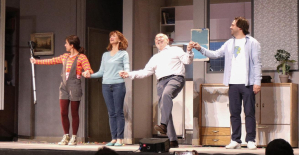 Gérard Jugnot and Laetitia Colombani reopen the Théâtre de l'Empire in Ajaccio
Gérard Jugnot and Laetitia Colombani reopen the Théâtre de l'Empire in Ajaccio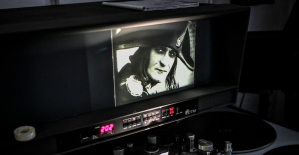 The restored first part of Abel Gance's Napoléon presented at Cannes Classics
The restored first part of Abel Gance's Napoléon presented at Cannes Classics Skoda Kodiaq 2024: a 'beast' plug-in hybrid SUV
Skoda Kodiaq 2024: a 'beast' plug-in hybrid SUV Tesla launches a new Model Y with 600 km of autonomy at a "more accessible price"
Tesla launches a new Model Y with 600 km of autonomy at a "more accessible price" The 10 best-selling cars in March 2024 in Spain: sales fall due to Easter
The 10 best-selling cars in March 2024 in Spain: sales fall due to Easter A private jet company buys more than 100 flying cars
A private jet company buys more than 100 flying cars This is how housing prices have changed in Spain in the last decade
This is how housing prices have changed in Spain in the last decade The home mortgage firm drops 10% in January and interest soars to 3.46%
The home mortgage firm drops 10% in January and interest soars to 3.46% The jewel of the Rocío de Nagüeles urbanization: a dream villa in Marbella
The jewel of the Rocío de Nagüeles urbanization: a dream villa in Marbella Rental prices grow by 7.3% in February: where does it go up and where does it go down?
Rental prices grow by 7.3% in February: where does it go up and where does it go down? With the promise of a “real burst of authority”, Gabriel Attal provokes the ire of the opposition
With the promise of a “real burst of authority”, Gabriel Attal provokes the ire of the opposition Europeans: the schedule of debates to follow between now and June 9
Europeans: the schedule of debates to follow between now and June 9 Europeans: “In France, there is a left and there is a right,” assures Bellamy
Europeans: “In France, there is a left and there is a right,” assures Bellamy During the night of the economy, the right points out the budgetary flaws of the macronie
During the night of the economy, the right points out the budgetary flaws of the macronie These French cities that will boycott the World Cup in Qatar
These French cities that will boycott the World Cup in Qatar Women's C1: at what time and on which channel to watch the OL-PSG semi-final first leg
Women's C1: at what time and on which channel to watch the OL-PSG semi-final first leg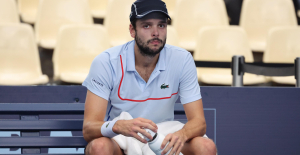 Tennis: after two victories this Friday, Grégoire Barrère qualifies for the semi-finals of the Bucharest tournament
Tennis: after two victories this Friday, Grégoire Barrère qualifies for the semi-finals of the Bucharest tournament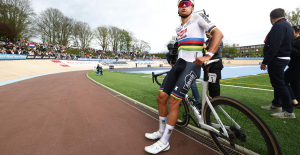 Cycling: Mathieu Van der Poel “recharged the batteries” for Liège-Bastogne-Liège
Cycling: Mathieu Van der Poel “recharged the batteries” for Liège-Bastogne-Liège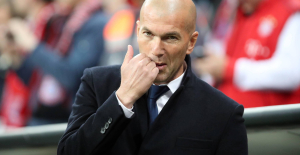 Mercato: Zidane at Bayern? We'll talk about it again, but...
Mercato: Zidane at Bayern? We'll talk about it again, but...


















